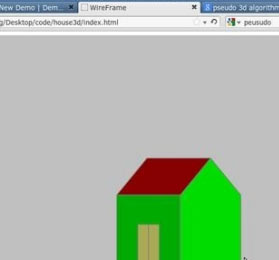VB.Net中文教程(1) 类别与封装性_.NET教程_编程技术
2013-12-20 14:30:55
[小 大]
已经帮助:人解决问题
封装|教程|中文
1. 类别的「程序成员」(Procedure Member) 类别 (Class)之任务是把资料(Data)和程序(Procedure)组织并封装起来。类别告诉计算机�「其对象应含有那些资料、应含有那些程序裨处理外界传来之讯息」。类别须详细说明它的资料及程序�我们称此资料是类别之「资料成员」(Data Member) �而称此程序是类别之「程序成员」(Procedure Member)。有关类别内容之叙述�就是所谓的类别定义(Class Definition)。类别定义之格式为──
类别之用途为�宣告对象。例如�
'ex01.bas
Imports System.ComponentModel
Imports System.Drawing
Imports System.WinForms
'----------------------------------------------------
Class Tree
Public varity As String
Public age As Integer
Public height As Single
End Class
'-----------------------------------------------------
Public Class Form1
Inherits System.WinForms.Form
Public Sub New()
MyBase.New()
Form1 = Me
'This call is required by the Win Form Designer.
InitializeComponent()
'TODO:Add any initialization after the InitializeComponent() call
End Sub
'Form overrides dispose to clean up the component list.
Public Overrides Sub Dispose()
MyBase.Dispose()
components.Dispose()
End Sub
#Region " Windows Form Designer generated code "
.......
#End Region
Protected Sub Form1_Click(ByVal sender As Object, ByVal
e As System.EventArgs)
Dim a As New Tree()
MsgBox("Object a Is Created.")
End Sub
End Class
此程序定义了类别Tree�它只含资料而无程序�为一「阳春型」之类别。当计算机执行到Form1_Click()程序内之宣告指令──
Dim a As New Tree()
就分配足够存放这 3项资料的内存空间给予对象 a。然而�此Tree类别只有资料而无程序。所以�对象 a无法接受外来之讯息。此时�可加入程序成员�使Tree类别含有程序、具有动力�对象就有能力来处理讯息了。例如�
'ex02.bas
Imports System.ComponentModel
Imports System.Drawing
Imports System.WinForms
'------------------------------------------------------------
Class Tree
Public varity As String
Public age As Integer
Public height As Single
Public Sub input(ByVal hei As Single)
height = hei
End Sub
End Class
'------------------------------------------------------------
Public Class Form1
Inherits System.WinForms.Form
Public Sub New()
MyBase.New()
Form1 = Me
'This call is required by the Win Form Designer.
InitializeComponent()
'TODO: Add any initialization after the InitializeComponent() call
End Sub
'Form overrides dispose to clean up the component list.
Public Overrides Sub Dispose()
MyBase.Dispose()
components.Dispose()
End Sub
#Region " Windows Form Designer generated code "
......
#End Region
Protected Sub Form1_Click( ByVal sender As Object, ByVal
e As System.EventArgs)
Dim a As New Tree()
a.input(2.1)
Messagebox.Show("Set a.Height to 2.1", "Hello!")
End Sub
End Class
此程序输出:Set a.Height to 2.1
现在�Tree类别已拥有程序成员 input()。程序成员的写法与一般VB程序相同�只是它应宣告于类别内�成为类别之专属程序。此刻�对象 a含有 3项资料及 1个程序�
计算机执行到指令──
a.input(2.1)
就将讯息──input(2.1)传给对象 a。此时计算机呼叫并执行对象 a内之input() 程序。对象 a内之 input()就是定义于Tree类别内之input() �于是Form1_Click()就把自变量──2.1 传给 input()内之 hei变量。
接下来�叙述──
height = hei
把 hei变量值存入对象 a之资料成员──height中。
此刻�对象 a对讯息之处理完成了�其内部资料改变了�亦即对象 a之内部状态(Internal State)改变了�这是对象的行为之一。上述您已经会加入一个程序了�依同样方法�继续加入其它程序�让对象的兴为更多采多姿。例如�
'ex03.bas
Imports System.ComponentModel
Imports System.Drawing
Imports System.WinForms
'-----------------------------------------------------------------------
Class Tree
Public varity As String
Public age As Integer
Public height As Single
Public Sub input(ByVal hei As Single)
height = hei
End Sub
Public Function inquireHeight() As Single
inquireHeight = height
End Function
End Class
'------------------------------------------------------------------------
Public Class Form1
Inherits System.WinForms.Form
Public Sub New()
MyBase.New()
Form1 = Me
'This call is required by the Win Form Designer.
InitializeComponent()
'TODO: Add any initialization after the InitializeComponent() call
End Sub
'Form overrides dispose to clean up the component list.
Public Overrides Sub Dispose()
MyBase.Dispose()
components.Dispose()
End Sub
#Region " Windows Form Designer generated code "
........
#End Region
Protected Sub Form1_Click( ByVal sender As Object, ByVal
e As System.EventArgs)
Dim a As Tree = New Tree()
Dim h As Single
a.input(2.1)
h = a.inquireHeight()
Messagebox.Show("height = " + str(h) + "公尺", "HI!")
End Sub
End Class
此程序输出如下�height = 2.1公尺
Tree类别有2个程序成员──input() 和inquireHeight()。类别之程序成员必须与其对象配合使用。格式为�
亦即�必须以讯息之形式出现。例如�
如果程序成员不与对象相配合时�计算机会如何处理呢�例如�
'ex04.bas
'Some Error Here !
Imports System.ComponentModel
Imports System.Drawing
Imports System.WinForms
'--------------------------------------------------------------
Class Tree
Public varity As String
Public age As Integer
Public height As Single
Public Sub input(ByVal hei As Single)
height = hei
End Sub
Public Function inquireHeight() As Single
inquireHeight = height
End Function
End Class
'---------------------------------------------------------------
Public Class Form1
Inherits System.WinForms.Form
Public Sub New()
MyBase.New()
Form1 = Me
'This call is required by the Win Form Designer.
InitializeComponent()
'TODO: Add any initialization after the InitializeComponent() call
End Sub
'Form overrides dispose to clean up the component list.
Public Overrides Sub Dispose()
MyBase.Dispose()
components.Dispose()
End Sub
#Region " Windows Form Designer generated code "
........
#End Region
Protected Sub Form1_Click( ByVal sender As Object, ByVal
e As System.EventArgs)
Dim a As Tree = New Tree()
Dim h As Single
a.input(2.1)
h = inquireHeight()
Messagebox.Show("height = " + str(h) + "公尺", "HI!")
End Sub
End Class
当计算机看到Form1_Click()内之指令──
h = inquireHeight( )
它视inquireHeight()为一独立之程序�与Tree类别内之inquireHeight()无关�于是计算机去找此inquireHeight()之定义�但找不着�所以程序错了。因之�您要掌握个原则── 程序成员之唯一任务是支持对象之行为�必须与对象配合使用。
2. 「封装性」概念
对象把资料及程序组织并「封装」(Encapsulate) 起来�只透过特定的方式才能使用类别之资料成员和程序成员。对象如同手提袋�只从固定的开口才能存取东西�否则您一定不敢把钱放在手提袋中。对象像一座「防火墙」保护类别中的资料�使其不受外界之影响。想一想我国的万里长城可保护关内的人民�避免受胡人侵犯�但长城并非完全封闭�而有山海关、玉门关等出入口。对象和万里长城之功能是一致的�它保护其资料成员�但也有正常的资料存取管道�以程序成员来存取资料成员。请看个程序�
'ex05.bas
Imports System.ComponentModel
Imports System.Drawing
Imports System.WinForms
'-------------------------------------------------------
Class Tree
Public varity As String
Public age As Integer
Public height As Single
End Class
'-------------------------------------------------------
Public Class Form1
Inherits System.WinForms.Form
Public Sub New()
MyBase.New()
Form1 = Me
'This call is required by the Win Form Designer.
InitializeComponent()
'TODO: Add any initialization after the InitializeComponent() call
End Sub
'Form overrides dispose to clean up the component list.
Public Overrides Sub Dispose()
MyBase.Dispose()
components.Dispose()
End Sub
#Region " Windows Form Designer generated code "
.......
#End Region
Protected Sub Form1_Click( ByVal sender As Object, ByVal
e As System.EventArgs)
Dim a As New Tree()
a.height = 2.1
Messagebox.Show("height = " + str(a.height) + "公尺")
End Sub
End Class
此程序输出如下�height = 2.1公尺
此程序中�Tree类别含有 3个资料成员�即对象内含有3个资料值,此类别之程序成员能直接存取之。同时,也允许其它程序来存取资料成员之值�其存取格式为�
例如�
a.height = 2.1
此指令把 2.1存入对象 a之height变量中。于是对象 a之内容为�
请看个常见错误如下�
'ex06.bas
'Some Error Here!
Imports System.ComponentModel
Imports System.Drawing
Imports System.WinForms
'-------------------- ------------------------------------
Class Tree
Public varity As String
Public age As Integer
Public height As Single
End Class
'--------------------------------------------------------
Public Class Form1
Inherits System.WinForms.Form
Public Sub New()
MyBase.New()
Form1 = Me
'This call is required by the Win Form Designer.
InitializeComponent()
'TODO: Add any initialization after the InitializeComponent() call
End Sub
'Form overrides dispose to clean up the component list.
Public Overrides Sub Dispose()
MyBase.Dispose()
components.Dispose()
End Sub
#Region " Windows Form Designer generated code "
.......
#End Region
Protected Sub Form1_Click( ByVal sender As Object, ByVal
e As System.EventArgs)
Dim a As New Tree()
height = 2.1
Messagebox.Show("height = " + str(a.height) + "公尺")
End Sub
End Class
Form1_Click()程序内之指令── height = 2.1,此height变量并未与对象配合使用�计算机不认为它是Tree类别之height变量。计算机视其为Form1_Click()之自动变量(Automatic Variable)�但却未见到它的宣告�因之程序错了�这是对象对其资料成员保护最松的情形�因为对象所属类别(即Tree)之外的程序(如Form1_Click()程序)尚能存取资料成员的内容。就像一颗炸弹�除了引信管外�尚有许多管道可使炸弹内之化学药品爆炸�您将不敢把炸弹摆在飞机上�因何时会爆炸将无法控制。同理�Tree类别之资料──height变量�连外部的Form1_Click()皆可随意改变它�那么有一天height之内容出问题了�将难以追查出错之缘故�这种程序将让您大伤脑筋�因为您已无法掌握状况了。
现在的VB程序中�能采取较严密之保护措施�使您较能控制类别内资料的变化状况。例如�
'ex07.bas
'Some Error Here!
Imports System.ComponentModel
Imports System.Drawing
Imports System.WinForms
'-----------------------------------------
Class Tree
Private varity As String
Private age As Integer
Private height As Single
End Class
'-----------------------------------------
Public Class Form1
Inherits System.WinForms.Form
Public Sub New()
MyBase.New()
Form1 = Me
'This call is required by the Win Form Designer.
InitializeComponent()
'TODO: Add any initialization after the InitializeComponent() call
End Sub
'Form overrides dispose to clean up the component list.
Public Overrides Sub Dispose()
MyBase.Dispose()
components.Dispose()
End Sub
#Region " Windows Form Designer generated code "
.......
#End Region
Public Sub Form1_Click( ByVal sender As Object, ByVal
e As System.EventArgs)
Dim a As New Tree()
a.height = 2.1
MessageBox.Show("height = " + str(a.height))
End Sub
End Class
此程序将原来的Public专用字改为Private�对Tree类别之资料成员采取严格之保护措施。Public 与Private之区别为──
Public 表示此类别外之程序可来存取资料成员。
Private 表示此类别外之程序绝无法直接存取资料成员�只有程序成员才能存取资料成员。
所以�计算机看到指令── a.height = 2.1,因Tree类别采取严格保护措施(private)�则Form1_Click()程序不能使用height变量名称。所以指令── a.height = 2.1错了。也许您问道�这样岂不是无法存取类别内之资料成员吗�答案是�「类别内之程序成员(Member Function) 可存取资料成员�而类别外之程序能藉程序成员代之存取资料成员。」
图1、类别之沟通管道──程序成员
这如同�引信管才能引起炸弹内之化学药品爆炸�人们只能经由引信管引爆之�让人们觉得使用炸弹既安全又简单。同样地�对象经由程序成员和外界沟通�可减少外界无意中破坏对象内之资料(无意中引爆炸弹)。例如�
'ex08.bas
Imports System.ComponentModel
Imports System.Drawing
Imports System.WinForms
'--------------------------------------------------
Class Tree
Private varity As String
Private age As Integer
Private height As Single
Public Sub input(ByVal hei As Single)
height = hei
End Sub
End Class
'--------------------------------------------------
Public Class Form1
Inherits System.WinForms.Form
Public Sub New()
MyBase.New()
Form1 = Me
'This call is required by the Win Form Designer.
InitializeComponent()
'TODO: Add any initialization after the InitializeComponent() call
End Sub
'Form overrides dispose to clean up the component list.
Public Overrides Sub Dispose()
MyBase.Dispose()
components.Dispose()
End Sub
#Region " Windows Form Designer generated code "
.........
#End Region
Protected Sub Form1_Click( ByVal sender As Object, ByVal
e As System.EventArgs)
Dim a As New Tree()
a.input(2.1)
MessageBox.Show("OK")
End Sub
End Class
将input()摆在Tree类别中�为Tree之程序成员�它能存取资料成员height之值。把input()程序宣告为Public表示类别外之程序可藉来呼叫它�其呼叫格式为──
简单规则是�
Public 表示授权给外界之程序藉由此格式呼叫程序成员。
如果此程序改写为�
'ex09.bas
'Some Error Here!
Imports System.ComponentModel
Imports System.Drawing
Imports System.WinForms
'----------------------------------------------
Class Tree
Private varity As String
Private age As Integer
Private height As Single
Private Sub input(ByVal hei As Single)
height = hei
End Sub
End Class
'-----------------------------------------------
Public Class Form1
Inherits System.WinForms.Form
Public Sub New()
MyBase.New()
Form1 = Me
'This call is required by the Win Form Designer.
InitializeComponent()
'TODO: Add any initialization after the InitializeComponent() call
End Sub
'Form overrides dispose to clean up the component list.
Public Overrides Sub Dispose()
MyBase.Dispose()
components.Dispose()
End Sub
#Region " Windows Form Designer generated code "
.......
#End Region
Protected Sub Form1_Click( ByVal sender As Object, ByVal
e As System.EventArgs)
Dim a As New Tree()
a.input(2.1)
MessageBox("OK")
End Sub
End Class
这程序有问题�因为 input()是Tree类别之Private程序成员而非Public程序成员�所以不能使用如下格式──
所以此程序错了。 请再看个例子吧�
'ex10.bas
Imports System.ComponentModel
Imports System.Drawing
Imports System.WinForms
'-------------------------------------------
Class Tree
Private varity As String
Private height As Single
Public age As Integer
Public Sub ShowAge()
MessageBox.Show("Age = " + str(Age))
End Sub
End Class
'-------------------------------------------
Public Class Form1
Inherits System.WinForms.Form
Public Sub New()
MyBase.New()
Form1 = Me
'This call is required by the Win Form Designer.
InitializeComponent()
'TODO: Add any initialization after the InitializeComponent() call
End Sub
'Form overrides dispose to clean up the component list.
Public Overrides Sub Dispose()
MyBase.Dispose()
components.Dispose()
End Sub
#Region " Windows Form Designer generated code "
.......
#End Region
Protected Sub Form1_Click( ByVal sender As Object, ByVal
e As System.EventArgs)
Dim a As New Tree()
a.age = 8
a.age = a.age + 2
a.ShowAge()
End Sub
End Class
Tree类别包含 2个Private成员── variety及height�且有 2个Public成员── age及 ShowAge()。由于age是Public资料成员�所以Fom1_Click()可使用格式──
来存取Tree内之age变量。指令── a.age = 8把8存入对象 a内之age 变量。指令──a.age = a.age + 2使对象a之age变量值加上2�成为10。由于ShowAge()程序是Public程序成员�也可使用格式──
来呼叫 ShowAge()程序。
由于类别(即对象)之目的是保护资料�并且提供程序成员来与外界沟通(接受、处理、并反应讯息)。通常�资料成员皆宣告为Private�而程序成员皆宣告为Public。亦即尽量少用格式──
而尽量多用格式──
例如�
'ex11.bas
Imports System.ComponentModel
Imports System.Drawing
Imports System.WinForms
'--------------------------------------------------------------------
Class Tree
Private varity As String
Private age As Integer
Private height As Single
Public Sub input(ByVal v As String, ByVal a As Integer, ByVal hei As Single)
varity = v
age = a
height = hei
End Sub
Public Sub Show()
MessageBox.Show(varity + ", " + str(age) + ", " + str(height))
End Sub
End Class
'---------------------------------------------------------------------
Public Class Form1
Inherits System.WinForms.Form
Public Sub New()
MyBase.New()
Form1 = Me
'This call is required by the Win Form Designer.
InitializeComponent()
'TODO: Add any initialization after the InitializeComponent() call
End Sub
'Form overrides dispose to clean up the component list.
Public Overrides Sub Dispose()
MyBase.Dispose()
components.Dispose()
End Sub
#Region " Windows Form Designer generated code "
........
#End Region
Protected Sub Form1_Click( ByVal sender As Object, ByVal
e As System.EventArgs)
Dim a, b As New Tree()
a.input("peach", 8, 2.1)
b.input("pinapple", 2, 0.5)
a.Show()
b.Show()
End Sub
End Class
这个VB程序�Tree内之资料成员──variety, age及height皆为Private成员,而input()及Show()程序是Public成员。Form1_Click()程序中�首先诞生对象── a及 b。接下来�指令──
把 3项资料分别存入对象 a之资料成员中�a 之内容为�
同样地�指令──
b.input( "pineapple", 2, 0.5 )
也把 3项资料存入对象 b之中�则 b之内容为�
最后�呼叫Show()程序把对象 a和对象 b之内容显示出来�
peach, 8, 2.1
pineapple, 2, .5
n
(责任编辑:)
友情链接:联系人:QQ370158739




